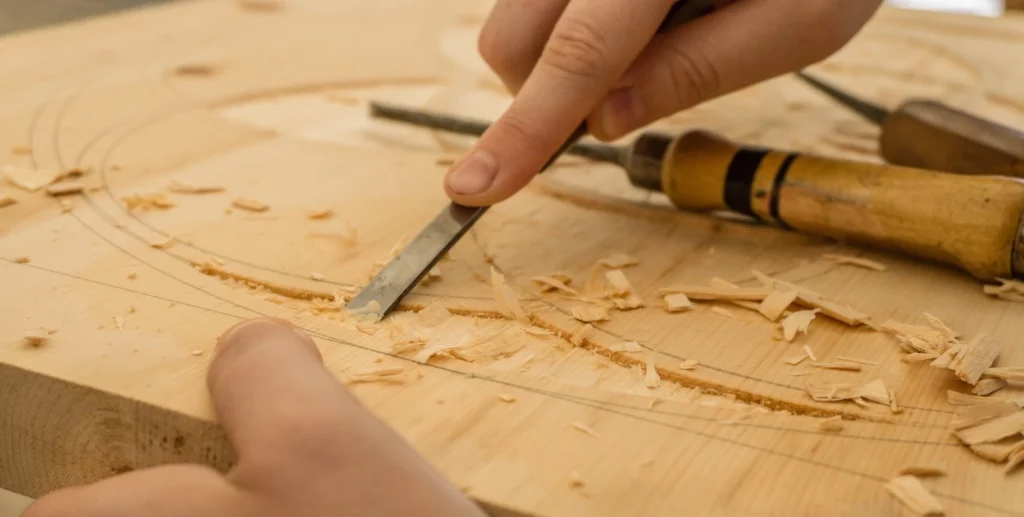How to Sand Curves and Hard-to-Reach Areas
Sanding is an essential step in many DIY projects, whether you are refinishing furniture, preparing surfaces for painting, or smoothing out rough edges. While sanding flat surfaces is relatively straightforward, sanding curves and hard-to-reach areas can be a bit more challenging. In this article, we will explore various techniques and tools that can help you achieve a smooth finish on curved surfaces and inaccessible corners.
Understanding the Basics of Sanding
Before we dive into the specifics of sanding curves and hard-to-reach areas, it’s important to understand the basics of sanding. Sanding involves the use of abrasive materials, commonly known as sandpaper, to remove imperfections, smooth surfaces, and prepare them for further treatment.
Sandpaper comes in various forms, including sheets, rolls, discs, and belts. It is made up of a backing material coated with abrasive particles. The grit of the sandpaper refers to the size of the abrasive particles, with lower numbers indicating coarser grits and higher numbers indicating finer grits. Different grits are suitable for different tasks, so it’s important to choose the right sandpaper for your specific project.
Tools for Sanding Curves and Hard-to-Reach Areas
When it comes to sanding curves and hard-to-reach areas, having the right tools can make all the difference. Here are some tools that can help you achieve a smooth finish in these challenging areas:
- Sanding Blocks: Sanding blocks are versatile tools that can be used for sanding both flat and curved surfaces. They come in various shapes and sizes, allowing you to sand different contours with ease. Sanding blocks provide a stable surface for sanding, ensuring even pressure distribution and preventing accidental gouging.
- Sandpaper Sheets: Sandpaper sheets are the most common form of sandpaper and can be easily cut into smaller pieces to fit the contours of curved surfaces. They can be wrapped around sanding blocks or used by hand to sand curves and hard-to-reach areas.
- Sanding Sponges: Sanding sponges are flexible and conformable, making them ideal for sanding curved surfaces. They are available in various grits and can be used wet or dry, depending on the material being sanded.
- Flexible Sanding Pads: Flexible sanding pads are designed to conform to curved surfaces, making them perfect for sanding intricate shapes and contours. They are often used in automotive refinishing and woodworking.
- Detail Sanders: Detail sanders, also known as mouse sanders, are small handheld power tools that are specifically designed for sanding hard-to-reach areas. They come with various attachments and interchangeable sanding pads, allowing you to tackle curves and corners with ease.
Techniques for Sanding Curves and Hard-to-Reach Areas
Now that we have covered the tools, let’s explore some techniques that can help you sand curves and hard-to-reach areas effectively:
1. Wrap Sandpaper Around a Dowel or Pipe
When sanding small curves or concave surfaces, wrapping sandpaper around a dowel or pipe can help you reach the desired shape. Choose a dowel or pipe with a diameter that matches the curve you are sanding. Secure the sandpaper with tape or rubber bands, ensuring it is taut and smooth. Use the dowel or pipe as a handle and sand the surface in a circular motion.
2. Use a Sanding Block with Contoured Surfaces
For larger curves or convex surfaces, a sanding block with contoured surfaces can provide better control and even sanding. Choose a sanding block that matches the curve you are working on. Wrap sandpaper around the block, ensuring it is tight and secure. Hold the sanding block firmly and move it along the curve, applying even pressure.
3. Employ Hand Sanding Techniques
Hand sanding can be effective for sanding irregular shapes and hard-to-reach areas. Fold a small piece of sandpaper into a manageable size and use your fingers to sand the desired area. This technique allows you to have better control and feel the surface you are sanding.
4. Utilize Detail Sanders
Detail sanders are excellent tools for sanding intricate shapes and corners. Attach the appropriate sanding pad to the detail sander and maneuver it along the curves and hard-to-reach areas. The small size and oscillating motion of detail sanders make them ideal for precise sanding.
5. Combine Tools and Techniques
Depending on the complexity of the curves and hard-to-reach areas, you may need to combine different tools and techniques to achieve the desired result. For example, you can start by using a sanding block to sand the larger curves and then switch to hand sanding or a detail sander for the more intricate areas.
Conclusion
Sanding curves and hard-to-reach areas can be a challenging task, but with the right tools and techniques, it becomes much easier. Whether you are working on a woodworking project, refinishing furniture, or preparing surfaces for painting, understanding how to sand curves and hard-to-reach areas is essential for achieving a smooth and professional finish.
Remember to choose the appropriate sandpaper grit for your specific project and use tools like sanding blocks, sandpaper sheets, sanding sponges, flexible sanding pads, and detail sanders to tackle curves and inaccessible corners. By employing techniques such as wrapping sandpaper around a dowel, using contoured sanding blocks, hand sanding, utilizing detail sanders, and combining different tools and techniques, you can achieve excellent results.
So, the next time you encounter curves and hard-to-reach areas in your DIY projects, don’t be intimidated. Armed with the knowledge and tools discussed in this article, you can confidently tackle any sanding challenge that comes your way.



















